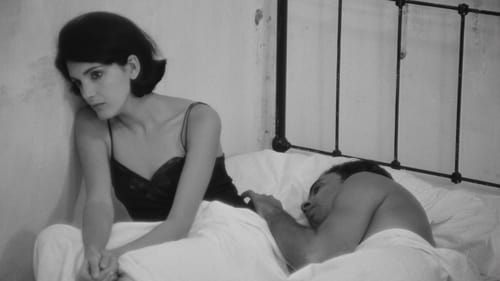
Five years after the passing of the iconic filmmaker Humberto Solas, one of the founders of the New Latin American Cinema, partners, friends and family gather to evoke aspects of the life and work of Cuban artist of universal size.

Amor Crónico follows Grammy-nominated, Cuban-born CuCu Diamantes as she embarks on a whirlwind tour of her home country. Interweaving glamorous live performances with a fictional romance, the film pays tribute to the history of cinema in surreal fashion. Backed by a high energy Latin soundtrack, Cucu's journey is a visual love poem to the sites, sounds, and people of Cuba.

Jugadora

Doña Lupita
In Santa Fe de Tierra Firme, an imaginary Latin American country, the indigenous dictator Santos Banderas rules with an iron fist. A group of rebels trying to seize power by force while some liberals try a change of government legally.

The Castro revolution was just consolidating its power when, in 1961, over 100,000 students were sent from their schools into the countryside to teach the peasants there how to read. Coinciding with the Bay of Pigs invasion, in this docudrama, 15-year-old Mario (Salvador Wood) has come to a tiny village in the Zapata swamps and gradually wins the villagers over to his task. At the same time, he receives an education in the realities of rural life from the hard-working peasants.

Lucia III (1968)
루시아는 각각 다른 시대적 상황을 배경으로 여성해방의 문제를 그린 3부작 옴니버스 영화로, 주인공들의 이름이 모두 루시아다. 1부에서 라파엘을 죽인 루시아는 끌려가던 거리에서 “쿠바는 깨어나라”고 외치는 한 미친 여자에게서 위로를 받고, 2부에서 독재자 바티스타 정권에 넘어간 암울한 극적 분위기를 마무리하는 것은 카메라를 쳐다보는 루시아의 눈이며, 3부에서 혁명군에게 글을 배운 문맹의 루시아가 처음으로 쓴 문장은 “난 떠나요. 난 노예가 아니에요”다. 이렇듯 혁명 이전과 이후 해방의 분위기 속에서도 해방된 삶을 살고 있는 건지 의심스러운 여러 루시아들의 삶을 극적으로 그려내고 있다. 토마스 구티에레즈 알레아 감독과 더불어 현대 쿠바영화의 거장인 움베르토 솔라스 감독은 각 이야기의 시대와 주제에 따라 영화의 스타일을 달리했다. 1890년대의 이야기는 멜로드라마로, 1930년대에는 복고풍의 화면으로, 마지막 1960년대의 이야기는 가벼운 코미디로 그려냈다. 2시간 40분이라는 만만치 않은 상영시간 동안 그는 파노라마처럼 시대의 변화를 담아낸다. 그것을 결국 역사의 흐름이 ‘진보’쪽에 있었음을 능숙하게 설득시킨다. 1960년대 말의 쿠바영화가 고전기 할리우드 혹은 구소련 영화와 맞먹는 형식미를 보여주는 걸작이다.

A young girl joins the guerrilla




